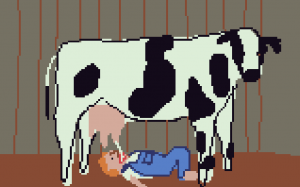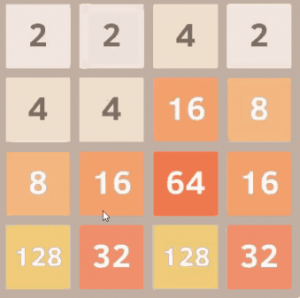Author: mfinn
Walking Simulators
Within the presentation given at the Art History of Games symposium, Over Games, Auriea Harvey & Michaël Samyn explain “For both the creator and the spectator, art is an exploration of the self and its environment.” This too seems to be the primary case for the arrival of the walking simulator. Game creators endeavor to build a virtual environment that enables an immersive experience rather than to perpetuate a competition or end goal. The video game is no longer a game but becomes the medium for artmaking. Games such as Dear Esther, Gone Home and The Graveyard champion such simulation goals. In the past and even today, walking simulators are not largely accepted by the gaming community. Their player interactivity is generally limited and thus controversy has surrounded their very notion. Screw Your Walking Simulators protests “sitting, walking, listening, looking, playing, just fucking being is interaction”. The games provoke the idea of what it means to use a videogame. Participants inhabit the spaces, explore, and the intentions of the game are left open-ended for the player to navigate. Storytelling transpires as players move through the environment and understand space.
Allergies
Gone Home/Game Critique of 2048
Gone Home
It is a first person adventure game. You are placed in the shoes of Kaitlin. She is returning home after some time abroad to find her house empty. You are fed clues throughout the game, though are not given any direct instructions or possible game outcomes. As you move through the house, you are able to turn on lights, pick up objects, move through rooms, and find clues. The game becomes interactive by players’ ability to move through the house and engage with objects that are found. As you move around the house, periodic audio journal entries are revealed.
It seems as though the environment we are placed in and the actual narrative of the story do not match up appropriately. Lonnie and Sam are two characters who fall in love and run away together and that is revealed at the end of the game. While you play the game, however, it is grim and eerie in the lighting, aesthetic, and pouring rain audio taking place within the home. You have the sense that something terrible has taken place. The build up surrounding the game seems heightened beyond the actual conclusion of the game. There is a development and tension that does not reach a corresponding fruition.
Game Critique of 2048
I have very little experience with playing games. The assigned Home Play/Twine games from this course make up a considerable portion of my overall game knowledge. Over the summer, however, I found myself completely addicted to the game 2048. What I found to be so addictive within the game is the idea that the challenge is attainable. The objective of this puzzle game is to combine the tiled numbers until you reach the number 2048. Players swipe the tiles back and forth to add them together on a 4×4 grid board. The game’s layout and object are easily grasped. Though the intent is simple, it does involve strategy adjustments. I experienced a rush of excitement when I moved forward in the game. The numbers double and the color configuration is adjusted. The visual feedback of advancing within the game contribute to its addictive nature.



